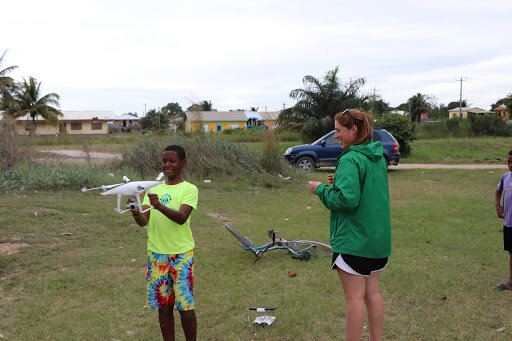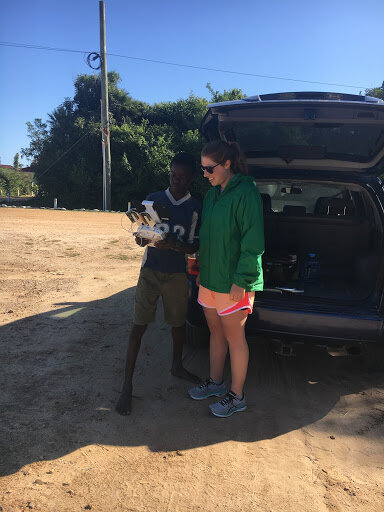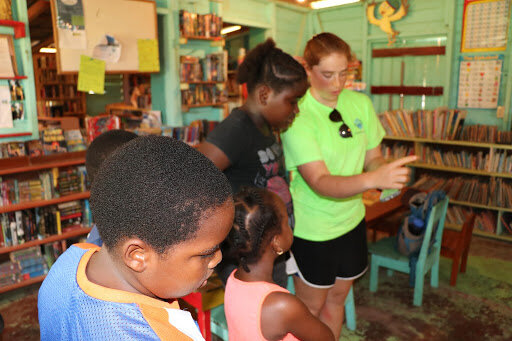From REU Scholar to REU Staff to Junior Solution Engineer!
In 2013 I applied for the first Citizen Science GIS REU in Atlanta, intrigued by the program’s core philosophy of engaging with people to learn about aspects of their communities that might benefit from a little extra attention. I ended up spending the summer of 2014 collaborating with 11 other students from across the country, as well as community partners, professors, and graduate students, all of whom helped spark my interest in this type of work. Following graduation, I joined the staff of the Citizen Science GIS REU in Belize for the summers of 2016 and 2017. As one may expect, the REU in coastal Belize differed quite a bit from the REU in Atlanta, Georgia; however, the importance of community was maintained in both. (The blistering heat, although out of our control, was another commonality.)

Kicking off drone school with a quick calibration.
Of the programs’ differences, the one that strikes me most is the age range of the community members we interacted with. In Atlanta and Hopkins we worked extensively with adults from the communities, but in Hopkins, a strong interest in what we were doing actually came from the youth. A handful of kids ranging from around 10 to 15 years old became staples in our research, pounding the sand with our students on a daily basis, often beginning as the sun was rising. They primarily assisted with data collection, which involved walking the beach or the streets of the village with an iPad and GPS unit, gathering information on marine debris or building infrastructure and culverts in Esri’s Collector app. Other days we worked with the drone, at which point interest skyrocketed...no pun intended. I was amazed at the ease with which these young people picked up the research practices and technology.
Mapping Hopkins with one of the CSGIS rockstars, Isani. (George is behind the camera!)
Whenever we’re back in Hopkins, whether for the REU or Open Reef, those same kids are out with us, learning about GIS and drones and web apps and all the ways they can be used in their village. We always end up learning quite a bit from them, as well! Their involvement over the years has grown and at least a few have expressed interest in going to school for GIS, with the goal of pursuing careers in this field. As someone who had never even heard of GIS until college, it’s exciting to see people getting involved in this kind of work at such young ages. I’m looking forward to seeing how their involvement with Citizen Science GIS continues to develop in the coming years, and am thrilled that Hopkins has young people to serve as geographic and environmental ambassadors.
The DRONES portion of the Maps, Apps, and Drones tour at Miss Bertie’s Community Library!
